Edinburgh – the most remarkable city in Scotland
This is the last part of the eclipse trip to Scotland. Read more about almost total eclipse-watching here and about the journey across Scotland here.
…After we arrived at Edinburgh Bus Station around 22:00 we were in a rush because we had to find our hostel and check in there. Eventually, we came there just after 23:00.
Edinburgh is the capital of Scotland. The population of this city is around 490 thousand people. In the whole city, the region lives more than 1,3mo. Edinburgh is recognized as the capital of Scotland since the XV century. This city is home to the Scottish Parliament and the seat of the monarchy in Scotland.
Our accommodation was based in Roseburn, the western part of Edinburgh. We decided to scout Edinburgh’s must-see places randomly on foot (Pic.1). I would like to list all the nice places, which we have been seeing. Between this, I will insert some events, which we have met during this time.
Our first seen monument was the Donaldson School – founded in 1851. First, it was the Donaldson Hospital building. The object was built in Tudor architecture characterized by large corner towers. Tudor architecture has brick and stone masonry with large brick chimneys and as usual very big windows. The Donaldson Hospital was closed in 2003 because the building no longer fit its purpose. In 2008 the Donaldson School was opened. The building wasn’t accessible to us (Pic.2).
On the way, to the city center, we met a lot of people going in the opposite direction to see the rugby match between Scotland and Ireland. Rugby is the most common sport in the UK, so it always gathers many fans (Pic. 3,4).
Our next stop was St Mary’s Cathedral Edinburgh, a nice church, which was built in the late XIX century. This church is situated in the West End of Edinburgh’s New Town. This is the only cathedral in Scotland to maintain a tradition of daily choral services with choristers drawn from its own choir school. It was also the first Cathedral in Britain to employ girls in the treble line as well as boys in 1978 (Pic. 5,6,7).
Walking along cozy lanes and some modern buildings we came into Edinburgh’s Old Town. The West entrance to the Old Town opens Grassmarket, the historic Market Square. This not-big place is located directly below Edinburgh Castle (Pic. 8,9).
Moreover, it forms part of one of the main east-west vehicle arteries through the city center. In this place, you can see many restaurants, gift shops, and cozy pubs. The biggest surprise for me was a man wearing a skirt. The point is, that this garment of clothing is not a skirt but a Kilt. The kilt is the product of the amazing Gaelic heritage that the modern-day Scots are proud of. If you will say this directly to a person dressed like this you may be in trouble. There are a few myths about their Kilt. One of the myths says, that Scottish males are not wearing anything underneath the Kilt! Hence the ladies and tourists when seeing that guy wonder if that handsome Scottish gentleman is a “True Scotsman” or not! Another myth says, that In Scotland is impossible to distinguish male toilets from female ones. We met another handsome Scotsman later also. Let’s stress Handsome! Whatever the age! (Pic. 10,11) And competitive among young model girls. Some of them won’t pass their prime.
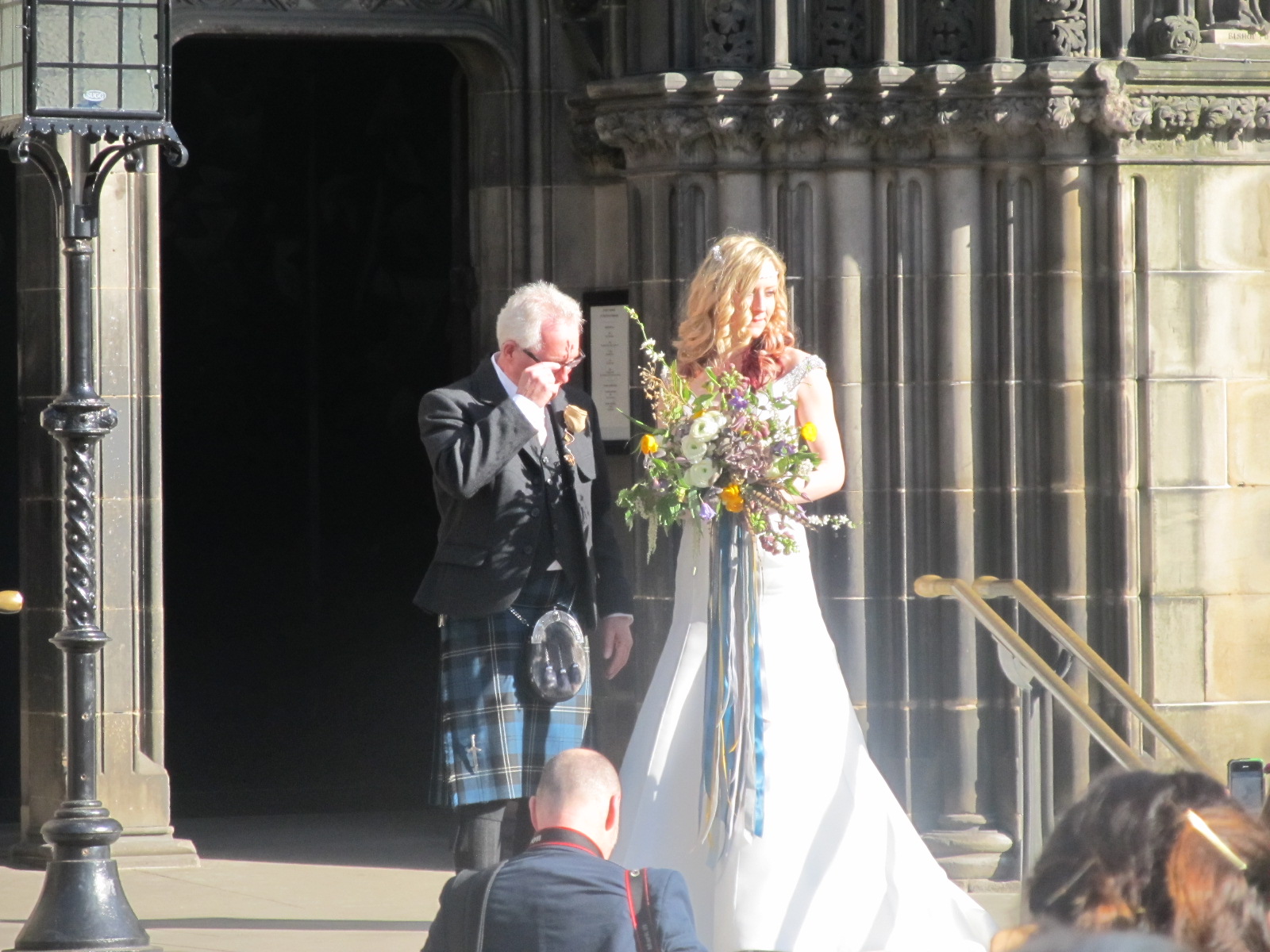
Pic. 11 Scottish “Groom” wearing Kilt. It always looks very nice whatever the age! St Giles Cathedral in Edinburgh.
Wandering through the beautiful Old Town you will admire tall, old buildings finished with casing stones and narrow paved streets. One of the most beautiful, embedded just under Castle hill is Victoria Street (Pic.12).
This is one of the most photographed locations in the city. Here is a gentle curve amidst colorful shopfronts is one of the best spots for tourist photos and postcards. This magic lane leads us to the front of the Scottish National Library, which is the main example of modern architecture (1980’s) (Pic. 13).
From this place, we turned left twice to be on the High Street finally, which leads directly to the Castle (Pic.14).

Pic. 13 The High Street leading to Edinburgh’s Castle through many stone buildings and prominent churches.
Before you enter the Castle you will enjoy amazing views around Edinburgh and the surrounding areas. Castle Hill (Castle Rock) is a volcanic plug formed around 350 million years ago during the early Carboniferous period. This rock remains from a volcanic pipe 130 meters above sea level. The best view of Castle Rock is from the south, west, and north where tourists can see towering rocky cliffs rising up to 80m. Hence the only way to the Castle lies to the east, where the ridge slopes more gently (Pic. 14).
The Castle’s forecourt is quite wide. This is the best place to see the castle walls. I am not sure, that this view is still available, because Google earth shows me, that some new construction has been built there (Pic. 15), which is absolutely not suitable for the scene! Edinburgh Castle is a historic fortress since at least the reign of David I in the XII century. Next, the site was a royal residence up to the XV century. Between the XV and XVII century, the Castle was used as a military barracks with a large garrison. Since the early XIX century, onwards many restoration programs have been carried out. Today Edinburgh Castle is a part of Scotland’s Natural Heritage. This object is really well worth seeing, however, we didn’t go inside due to payable admission.
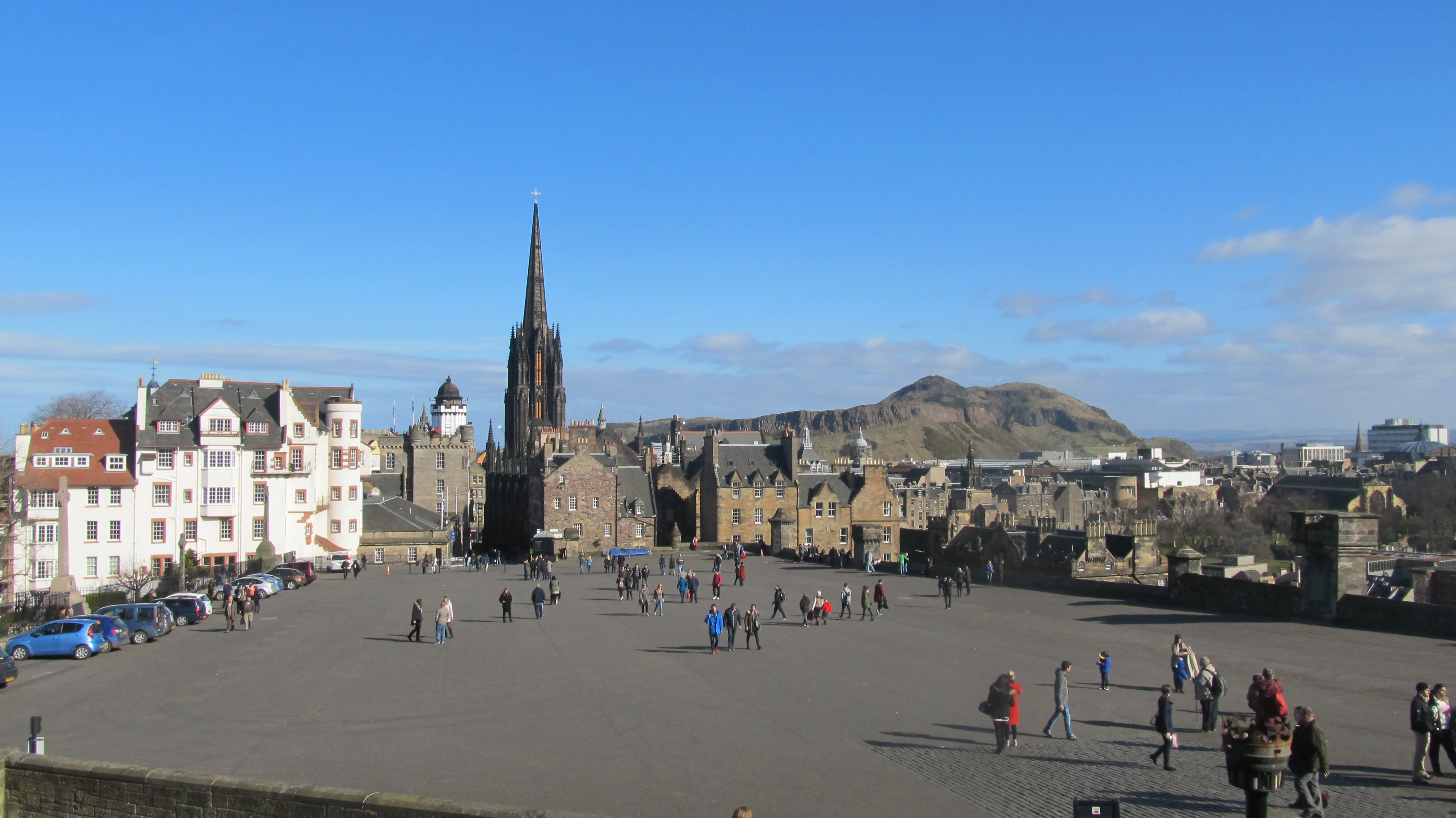
Pic. 18 The Edinburgh Castle’s forecourt – view towards High Street with towering the Hub’s spire, the highest in central Edinburgh and Arthur’s Seat beyond.
Walking down the High Street from the Castle you can see a few nice landmarks. One of them is St. Giles Cathedral, also known as the High Kirk of Edinburgh. This is the principal place of worship of the Church of Scotland in Edinburgh. This place remembers a religious conflict between the Scottish and Anglican Church. Next to the church, the Parliament of Scotland is situated. When you go downwards the High Street you will see the Tron Kirk, a former principal parish church. This church was closed in 2008 and has been turned into the market. When I saw it I felt really disappointed as a catholic person. I didn’t know before about this kind of way to use the church (Pic. 20,21). I saw it for the first time! Possibly because I am from Poland, which is a traditionally catholic country and every church is using only religious things.
Outside the Castle and Old Town, you may visit another 2 big spots: Arthur Seat with beautiful Salisbury Crags and Calton Hill with many historical remnants (Pic. 22). When we were walking towards Arthur’s hill we saw such a beautiful Hollyrood Palace (Pic. 23). This Palace has been built on the rouns former Hollyrood Abbey. This place became a big residential for the English monarchies, who lived in Scotland.
We climbed onto Arthur’s Seat from the north side, where a big green park is situated. This whole area is Holyrood Park. Many of Edinburgh’s inhabitants come here to take some climbing over the Salisbury Crags, jogging, or walking on the top of the hill. The top of Arthur’s Seat grants a breathtaking view of Edinburg (particularly Edinburgh Castle and Calton Hill) and surrounding areas (Pic. 24-28). Arthur’s Seat is the former volcano, formed around 350 million years ago. Next, the hill was eroded by a glacier moving from west to east during the Quarternary, approximately the last two million years, exposing rocky crags to the west and leaving a trail of material swept to the east. The hills rise above the city to a height of around 250m and provide excellent panoramic views of the city and beyond.
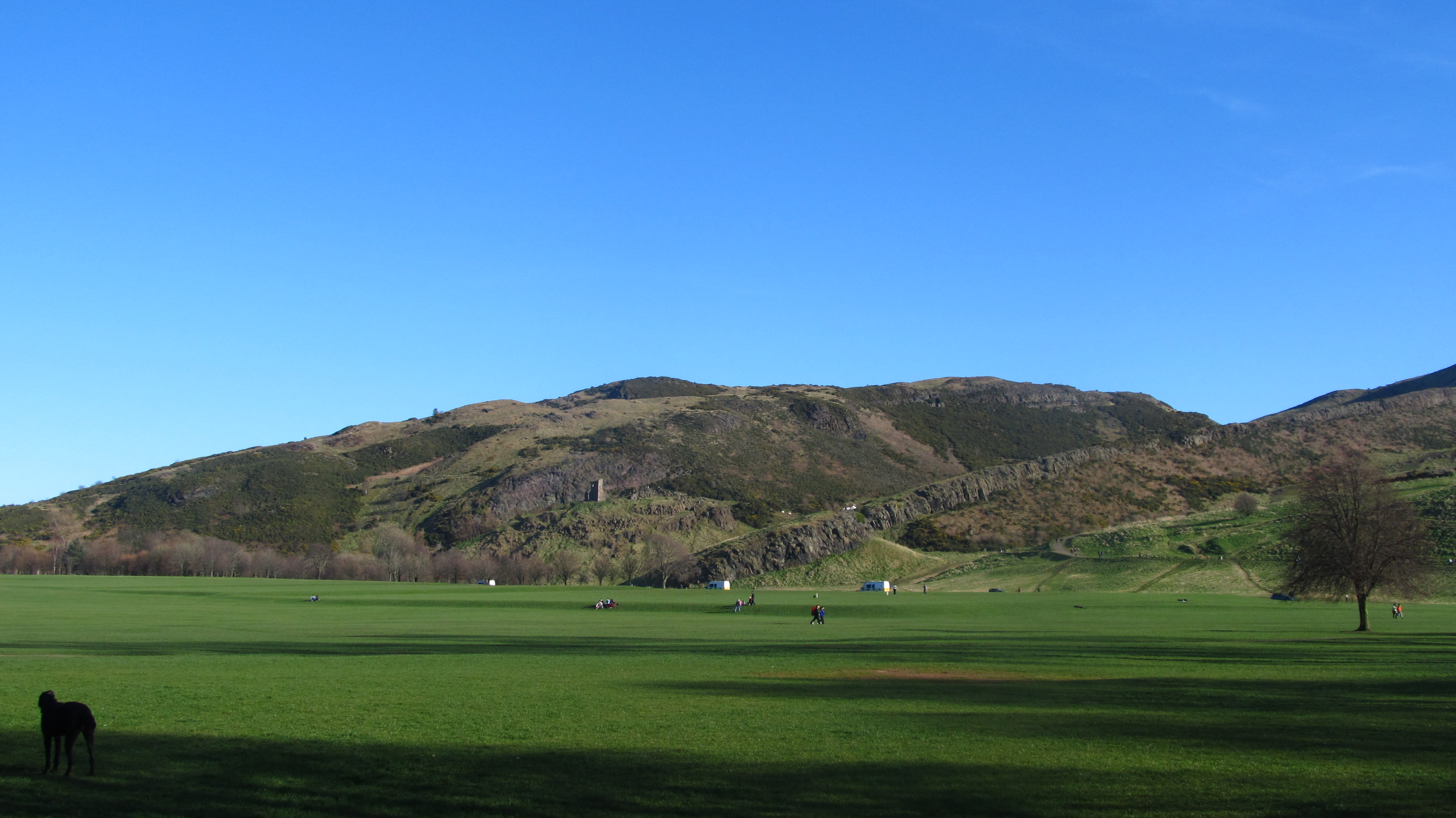
Pic. 24 View from the Hollyrood Park towards the easter and higher peak of Arthur’s seat, which rises around 250m above sea level.

Pic. 29 The Arthur’s Seat and Castle rocks are not only one volcanic remnant of the Edinburgh area. This is another, North Berwick Law saw from Arthur’s Seat at around 30km distance, which rises up to 187m above sea level (Zoom 12x).
The last place, where we have been to was Calton Hill. The way from Arthur’s Seat to Calton Hill isn’t long. We passed by the Hollyrood Palace and headed for the big Calton Old Cemetery (Pic. 30). This cemetery was located on the previous Old Calton Burial Ground. On the west side of this graveyard, you can see the watchtower (Pic. 31). This watchtower was built at an upper corner of the cemetery to protect against graverobbing. The object was occupied as a house for most of its history. Despite being tiny (with a 5m internal diameter only) is said to have accommodated a family of ten at one time. Parents used to sleep on the central floor (living room), daughters on the top floor, and sons on the lower floor.
Calton Hill is located in central Edinburgh. This is the headquarter of the Scottish Government, based at St. Andrews House. There is a Scottish Parliament Building Too. On the hill, you can see also several notable monuments like National Monument (Pic. 32,33), the Nelson monument (Pic. 32), and the Dugald Stewart Monument (Pic. 34). One of the most important places in the Old Royal High School, also known as a New Parliament House (Pic. 35). This is a 19th-century neoclassical building was housing the school until 1968. After school relocation, the vacated building was considered by the Scottish Office as a home for the Scottish Parliament until 1997, when the Parliament was moved to the Hollyrood Palace, situated just under the hill. On the very top of the hill, we saw the City Observatory (Pic. 36). The Playfair Building is an astronomical observatory, which was established in 1776.
Calton Hill gave us a nice possibility to see the whole Old Town with the towering Castle beyond (Pic. 37). We could see better the Firth of Forth also (Pic. 38). It was nice to stay there until sunset, around 18:30. After this time we went down into Princes Street and passed by the Balmoral Hotel (Pic. 39). Balmoral Hotel is the five-star hotel and landmark, known as a North British Hotel. The location on Princess Street is very good because Princess Street is the most shopping street in Edinburgh. Just next to the Princess Mall Shopping Centre is situated the Scottish Monument. This is a Victorian Gothic monument to Scottish author Sir Walter Scott. It is the largest monument to a writer in the world (Pic. 40). When it got darker we headed for the bus station. We passed through the Edinburgh Waverley railway station, which is the principal station serving the capital of Scotland (Pic. 41). This is also the northern terminus of the East Coast Main Line (633km) from London King’s Cross.

Pic. 37 View from Calton Hill to the Edinburgh Old Town: on the foreground Balmoral Hotel, leftmost beyond the Hub and Edinburgh Castle.

Pic. 38 View from Calton Hill to Firth of Forth and the Inchkeith Island with lighthouse (zoom 12x).
We were straddling around the Bus Station until 22:00 when we caught the Megabus and returned to London the next day in the morning.
Mariusz Krukar
References:
Piggot S., 1982, Scotland before history, Edinburgh University Press, Edinburgh, ISBN 0-85224-470-3.
McWilliam C., Walker D., 1984, Buildings of Scotland, Penguin, London
Complete National Rail Timetable (in:) Network Rail. May 2013. p. 43. Retrieved 5 June 2013
City of Edinburgh Council: Guidelines to Five City Centre Graveyards, 2004
“Museums and galleries – Scott Monument“. The City of Edinburgh Council, Edinburgh.
Links:
21.03.2015 the rugby match Scotland vs Ireland
Victoria Street in Edinburgh
The St Giles Cathedral in Edinburgh


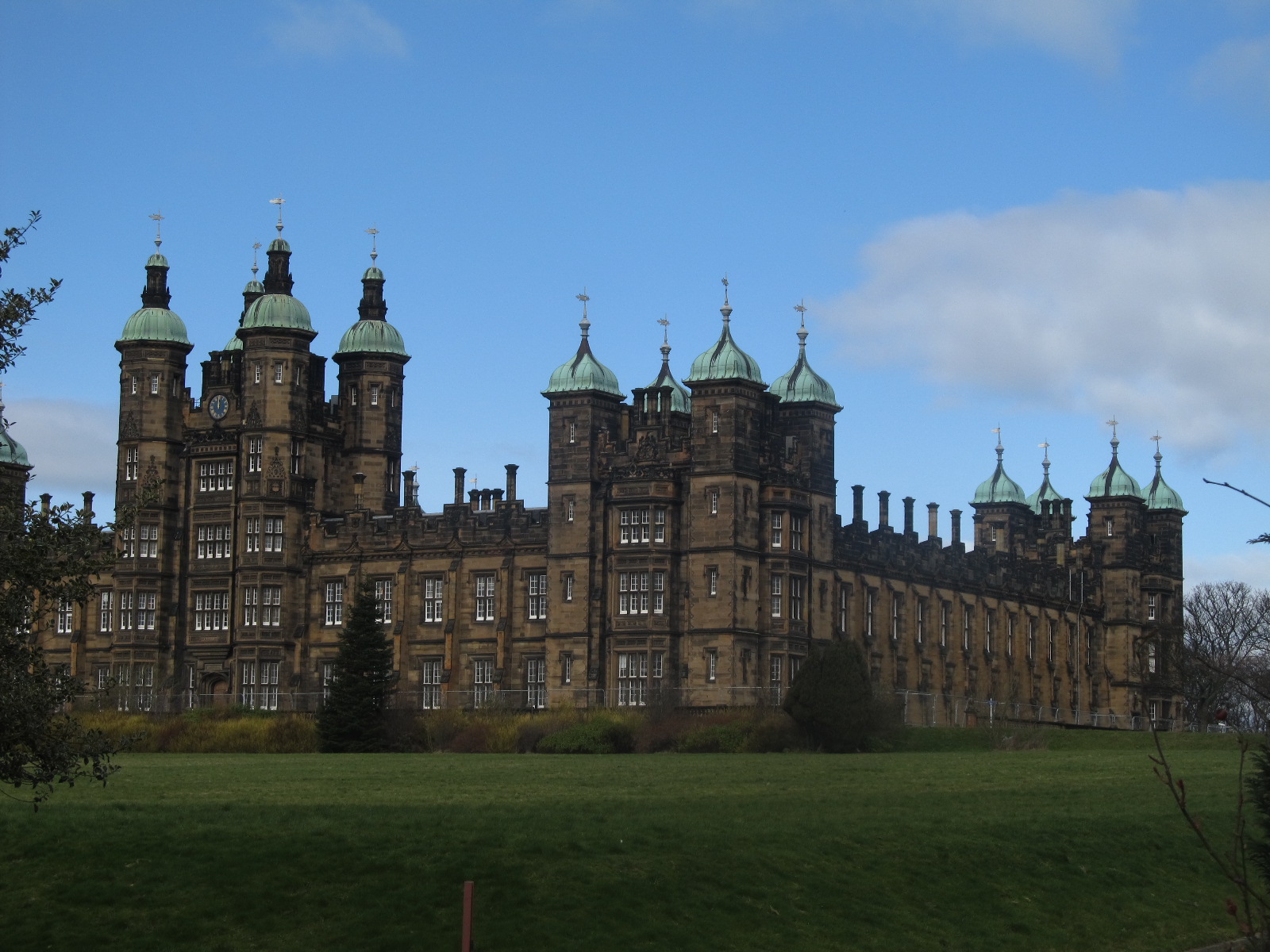

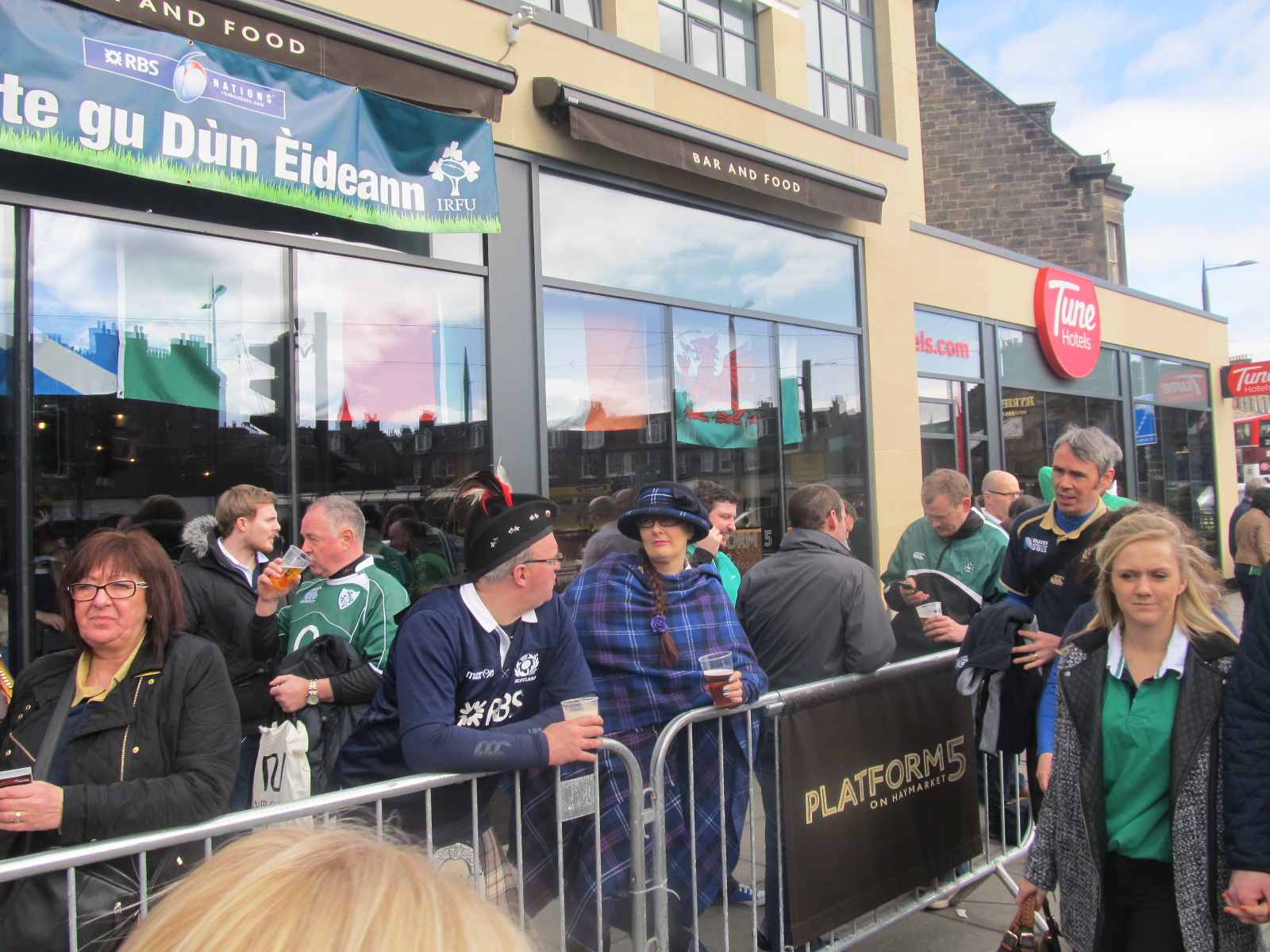

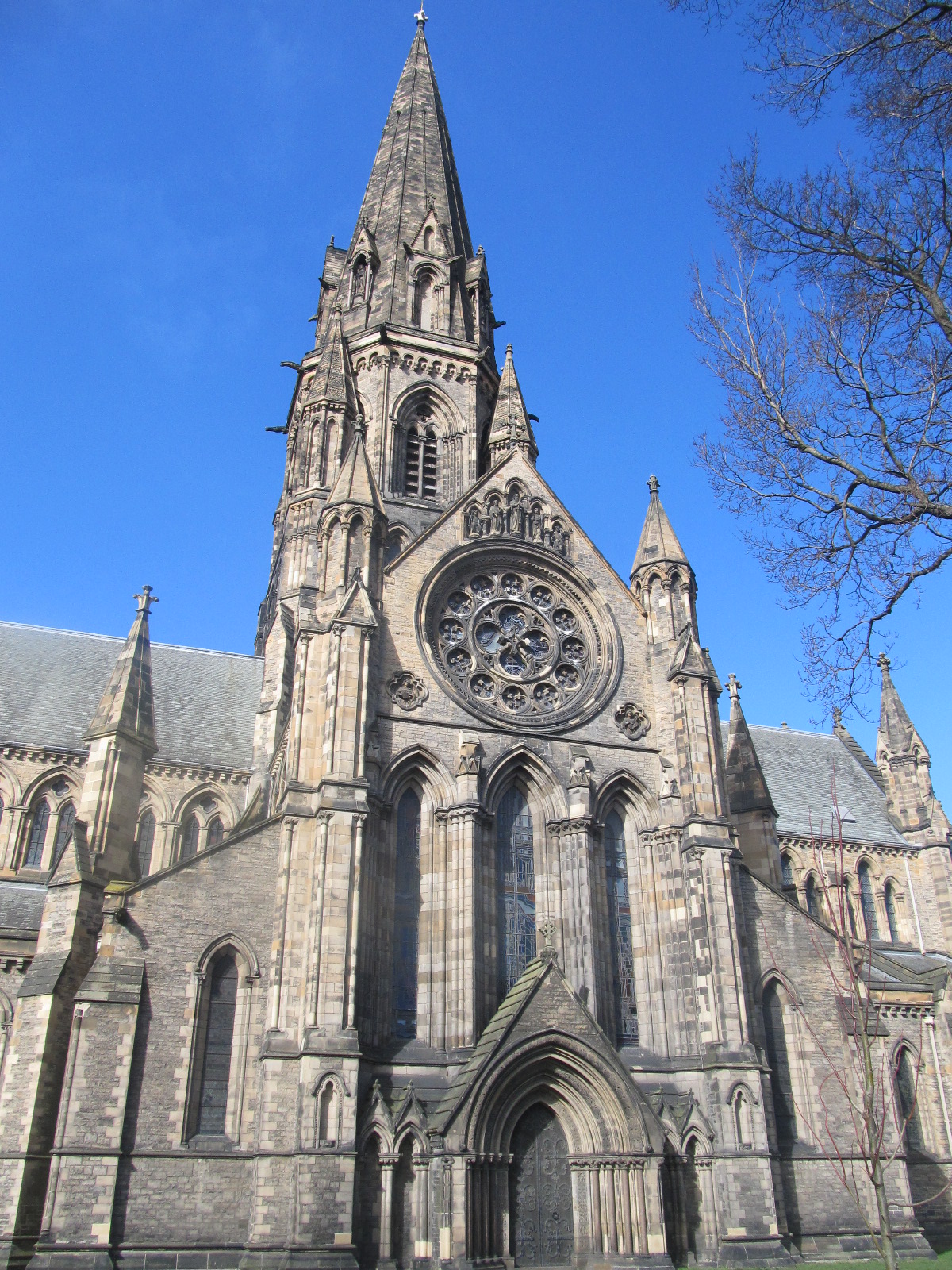
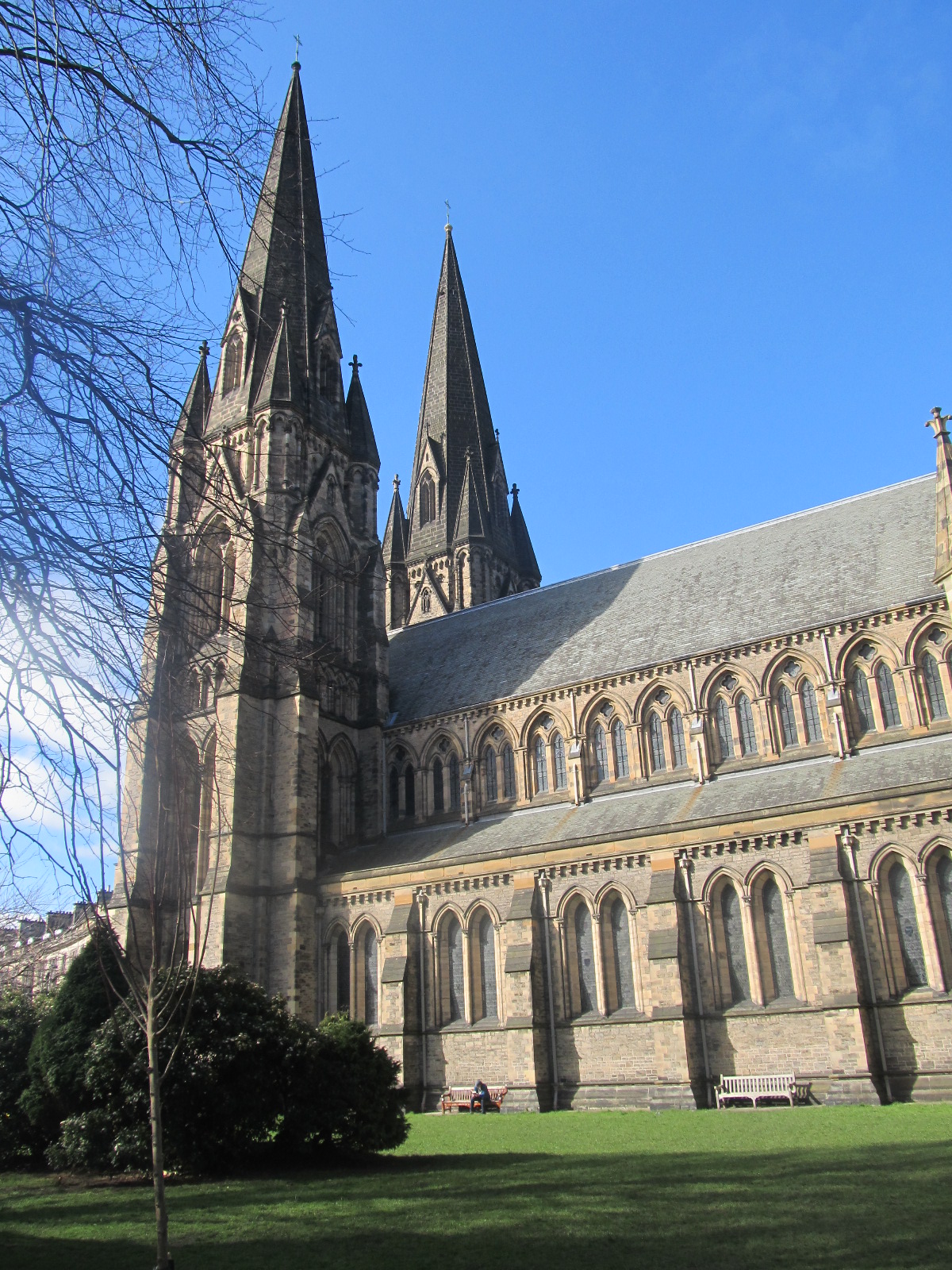
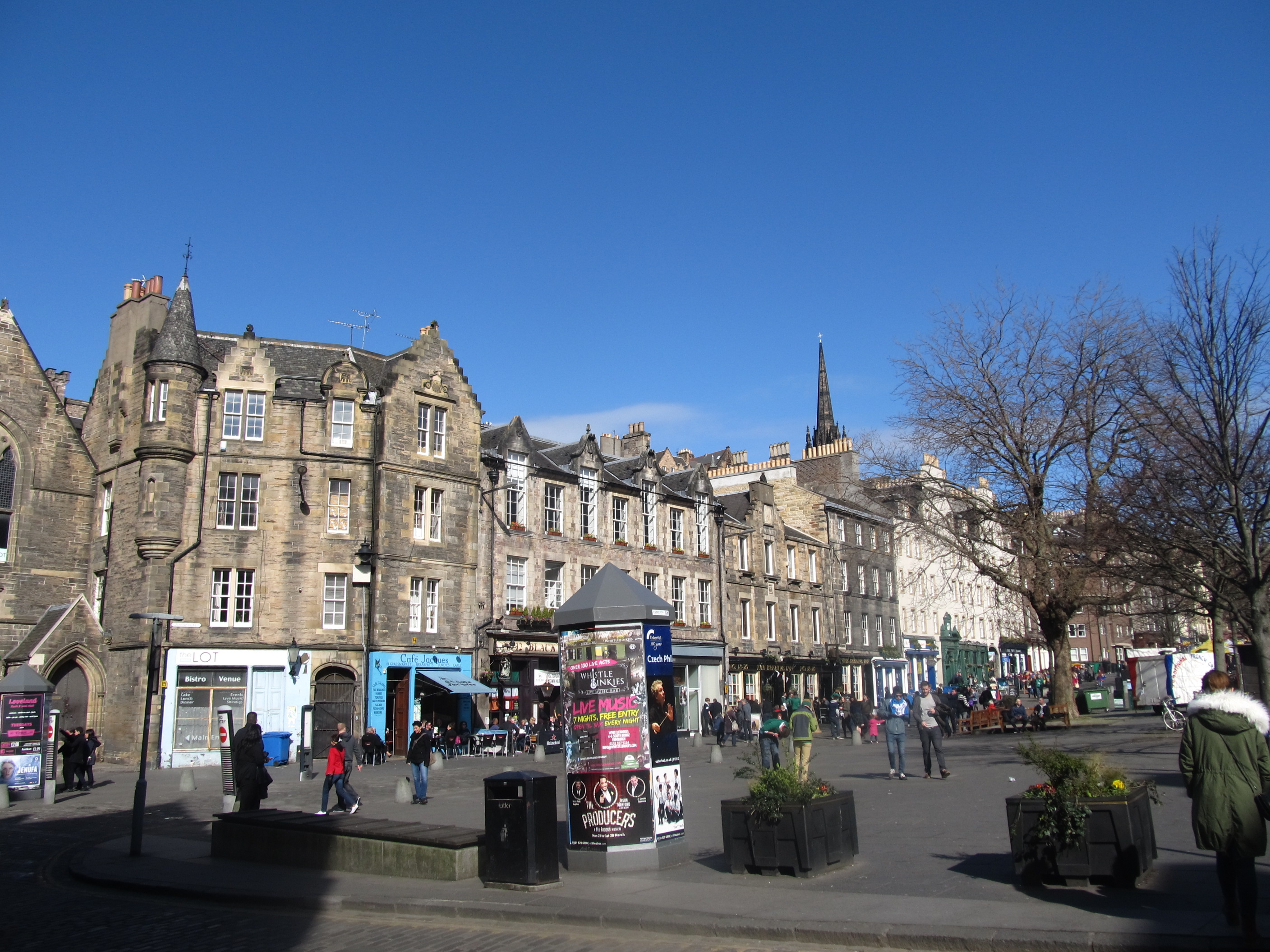

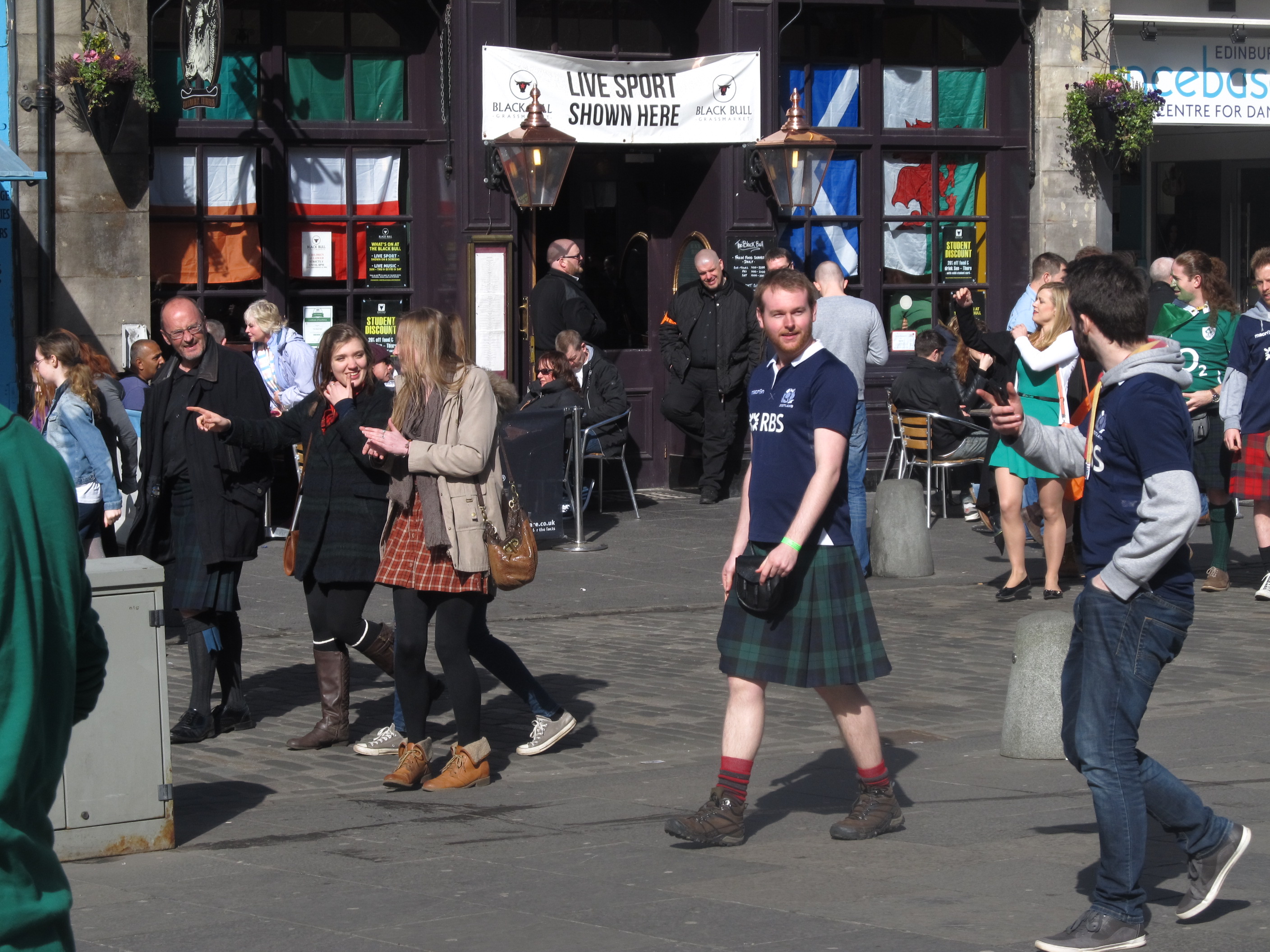
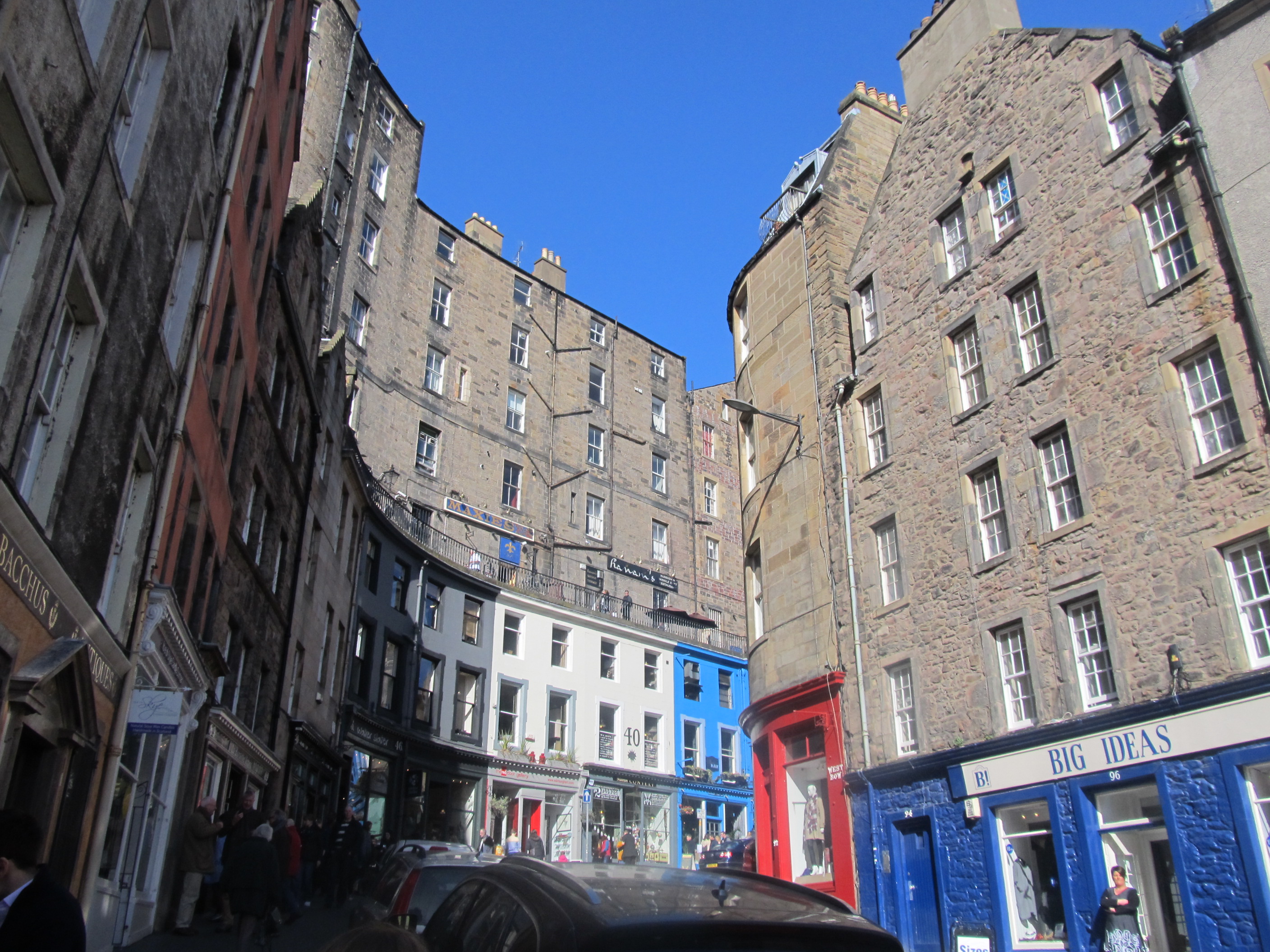


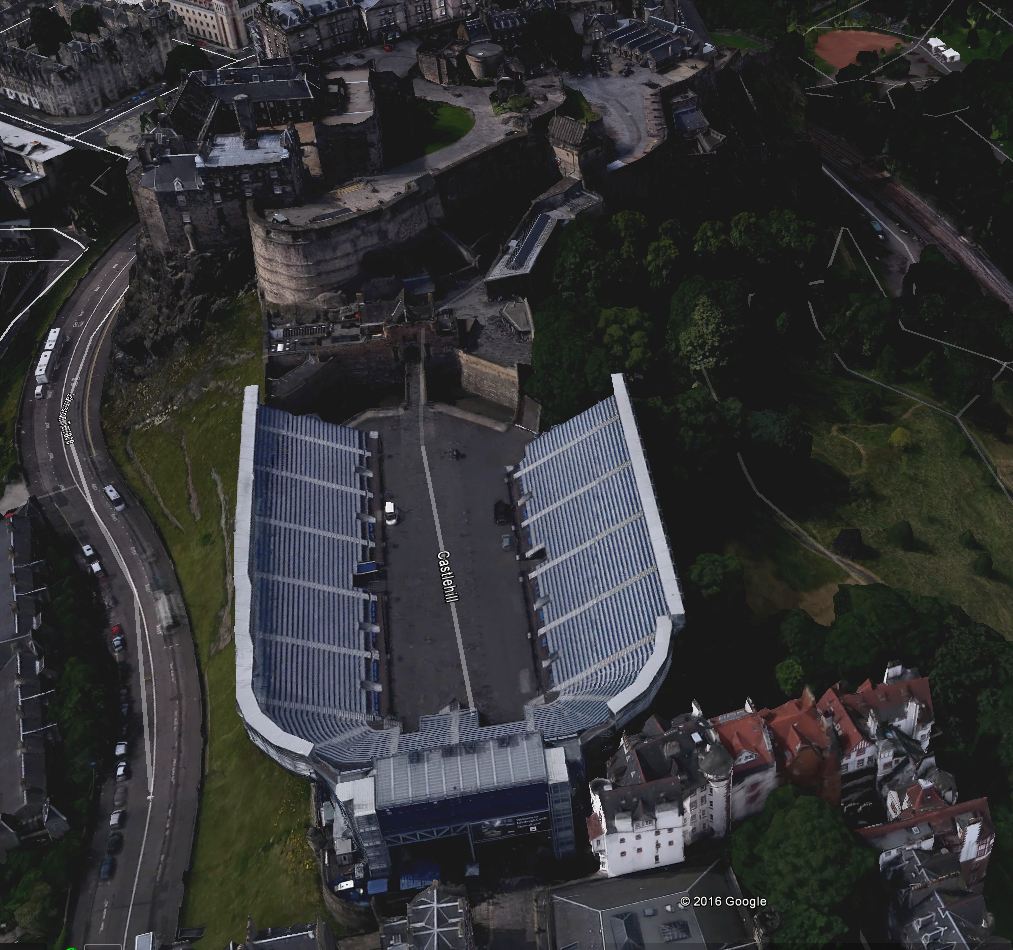
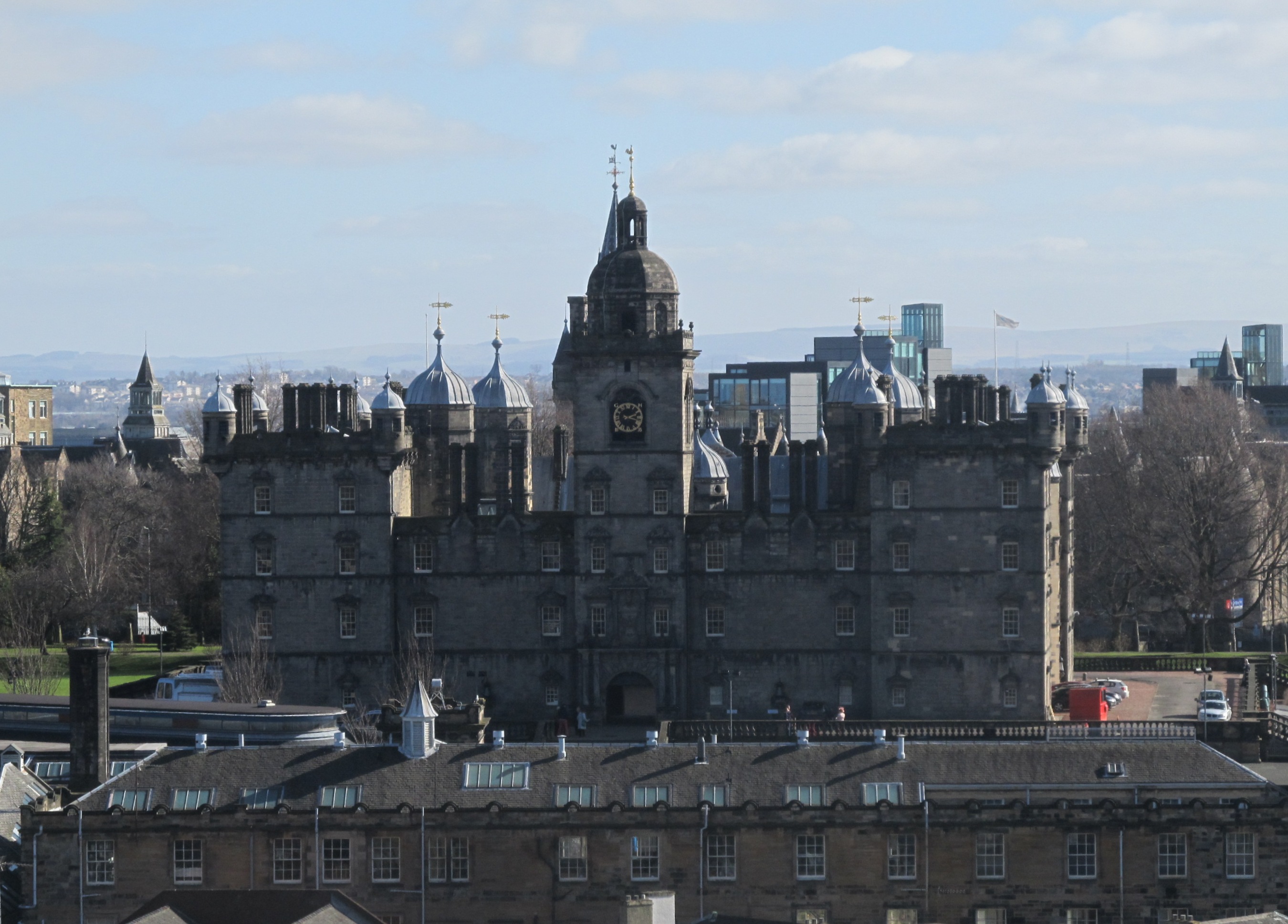
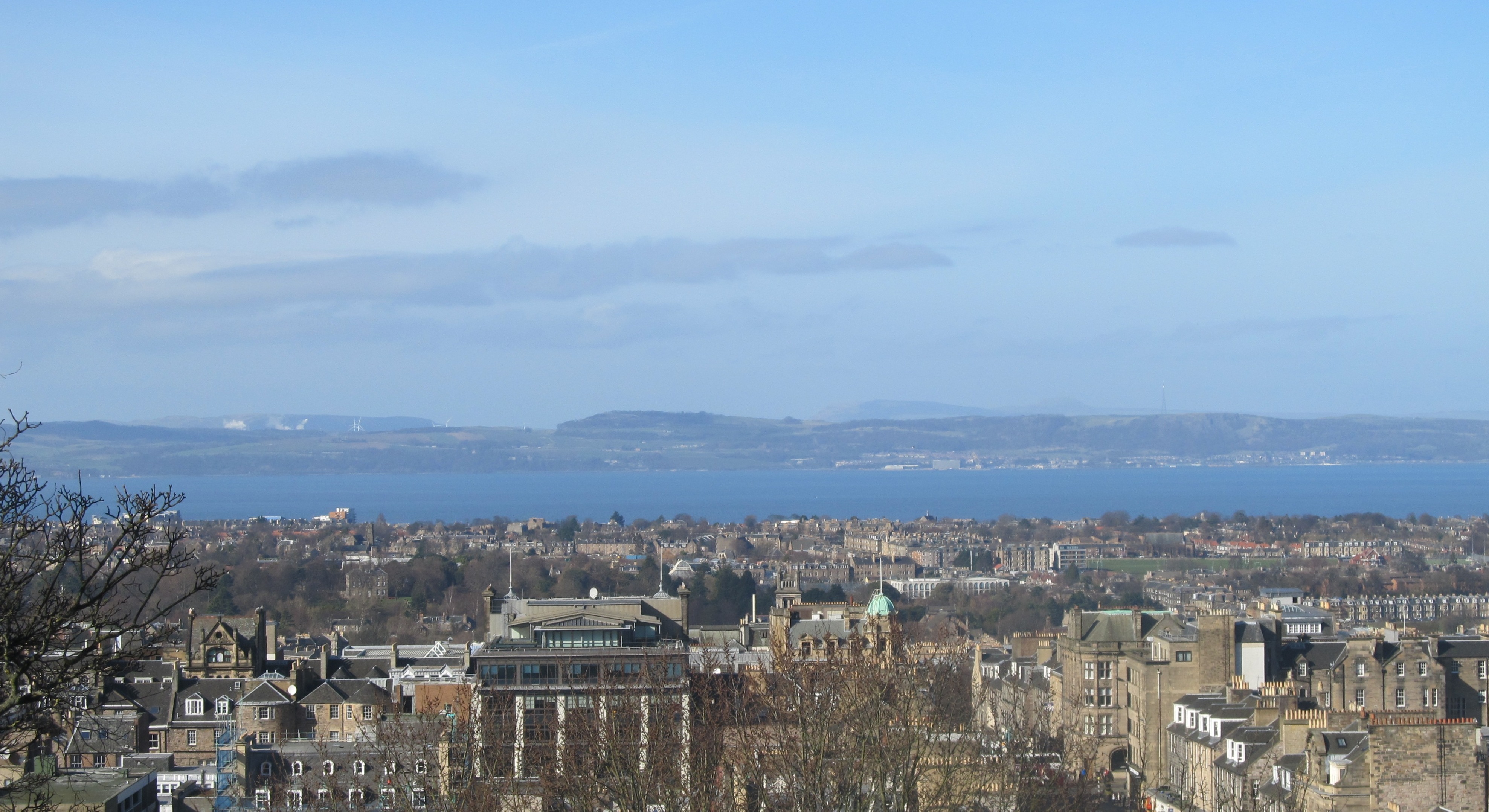
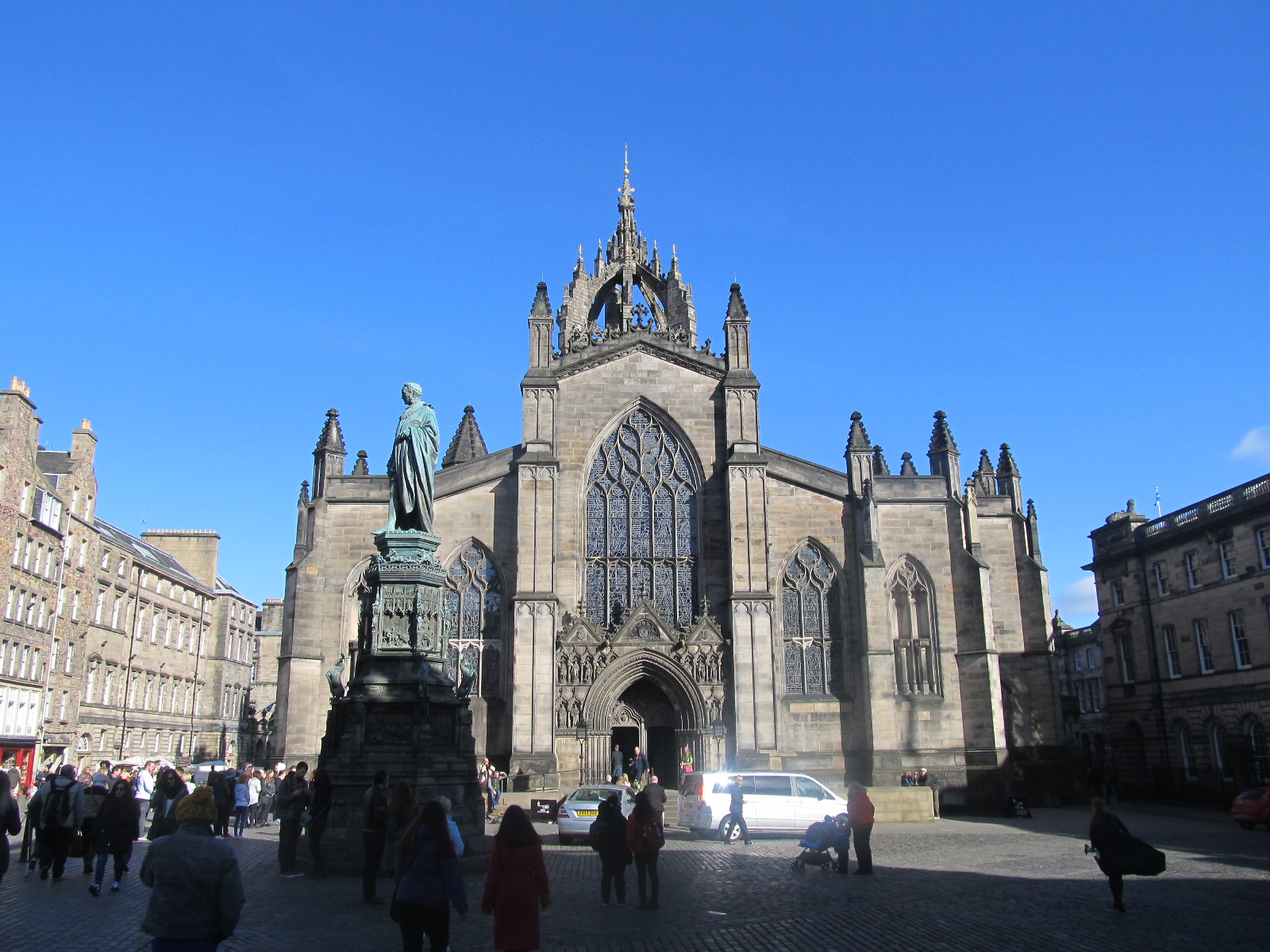
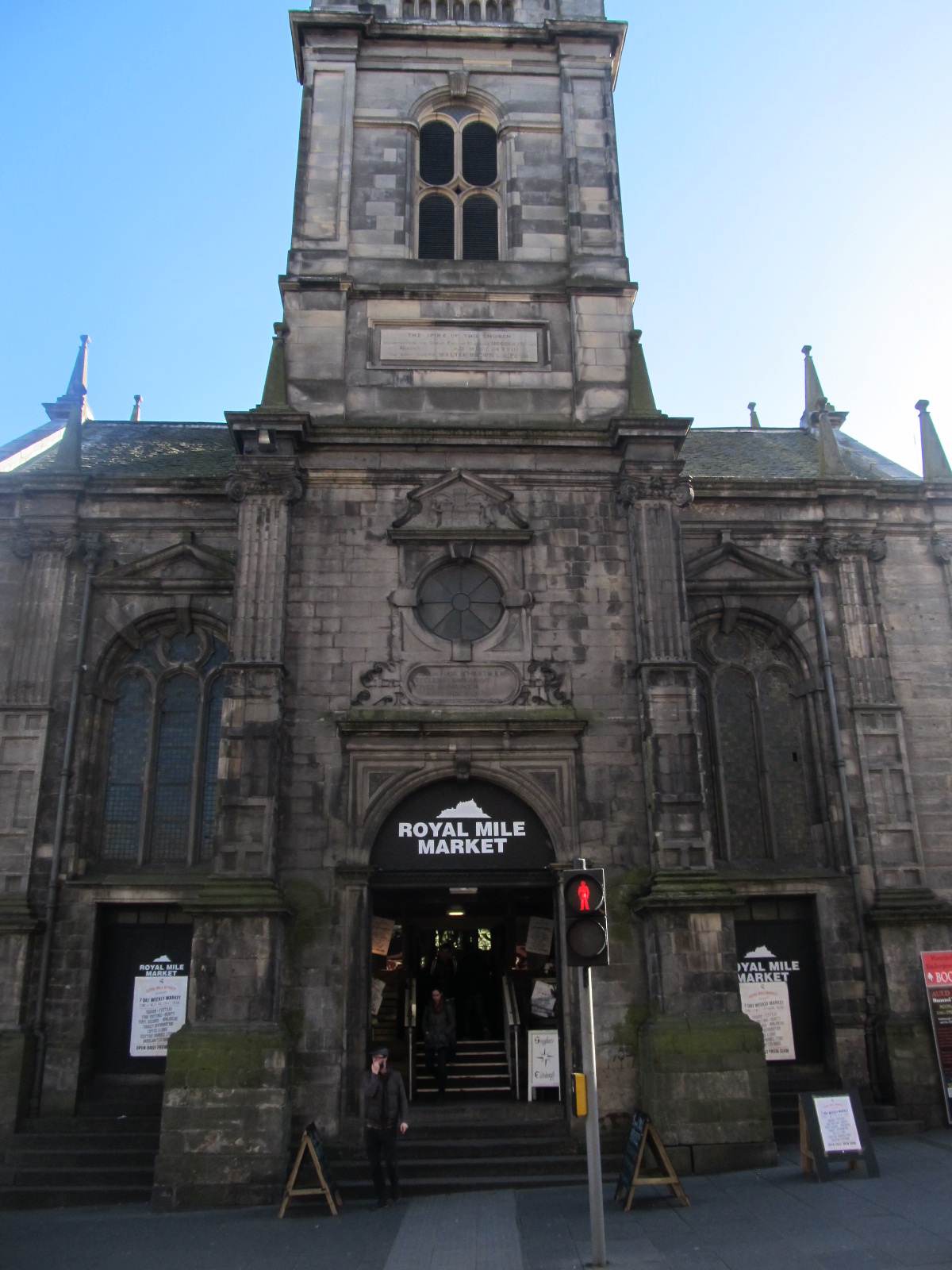
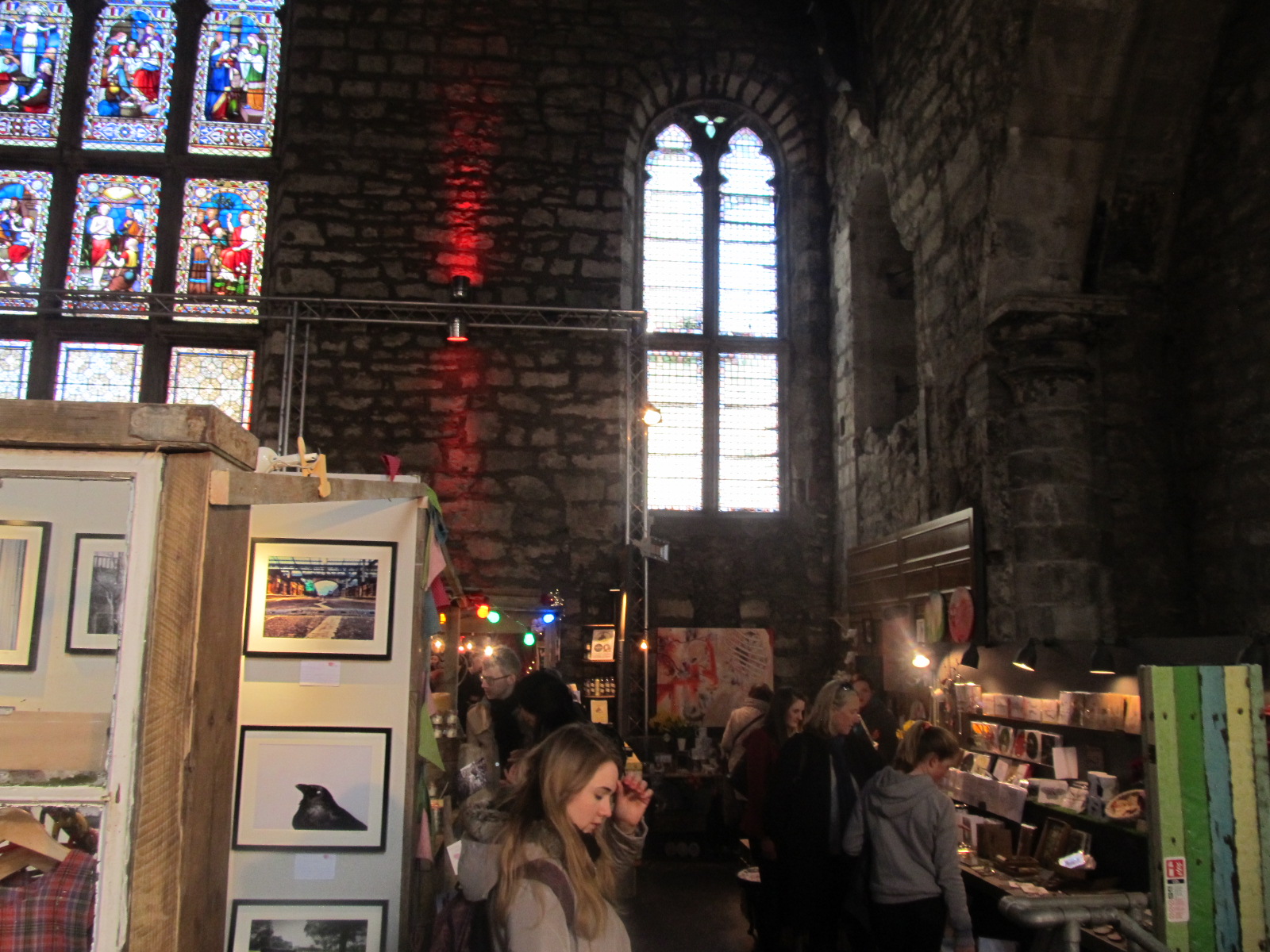
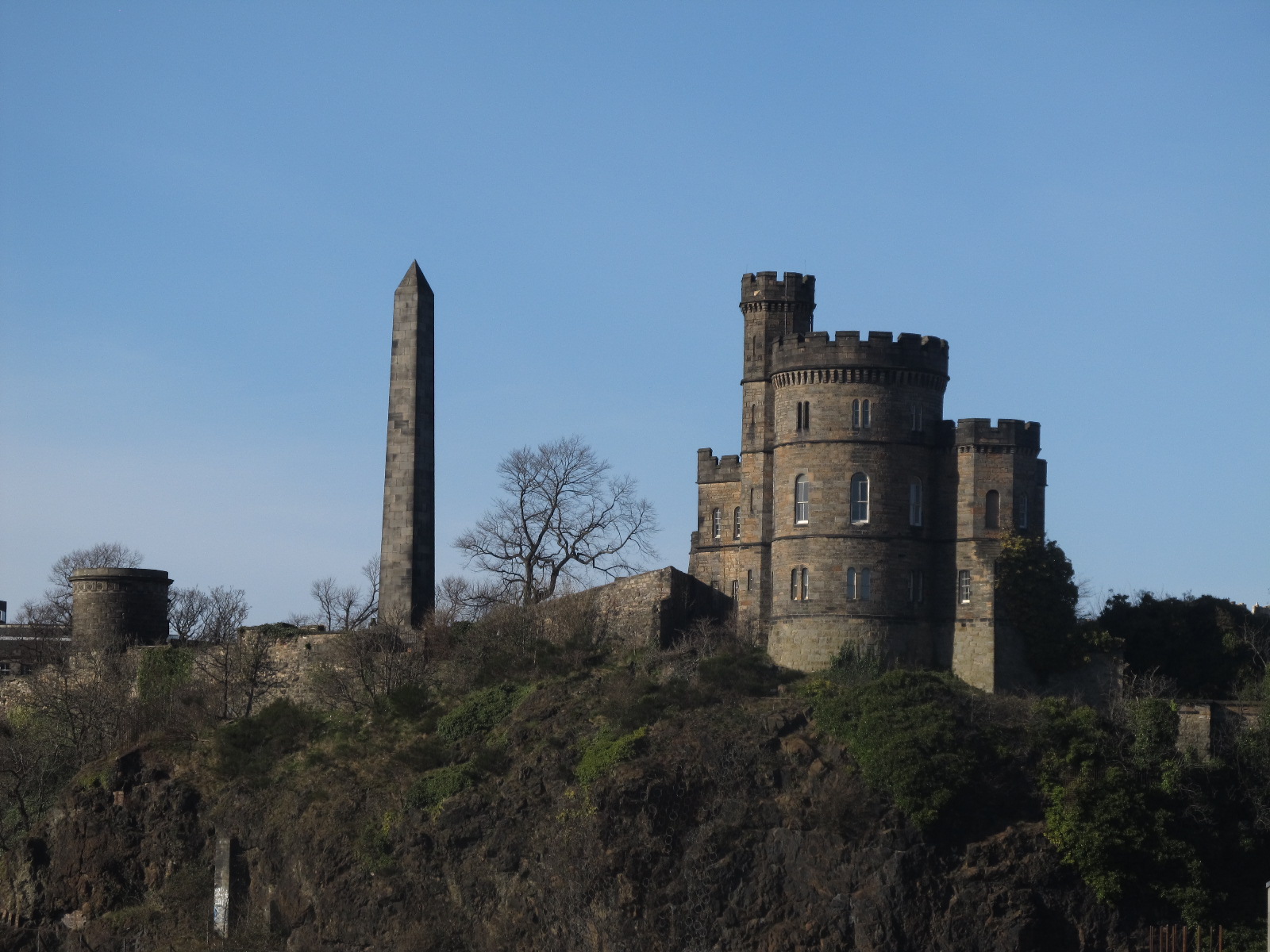



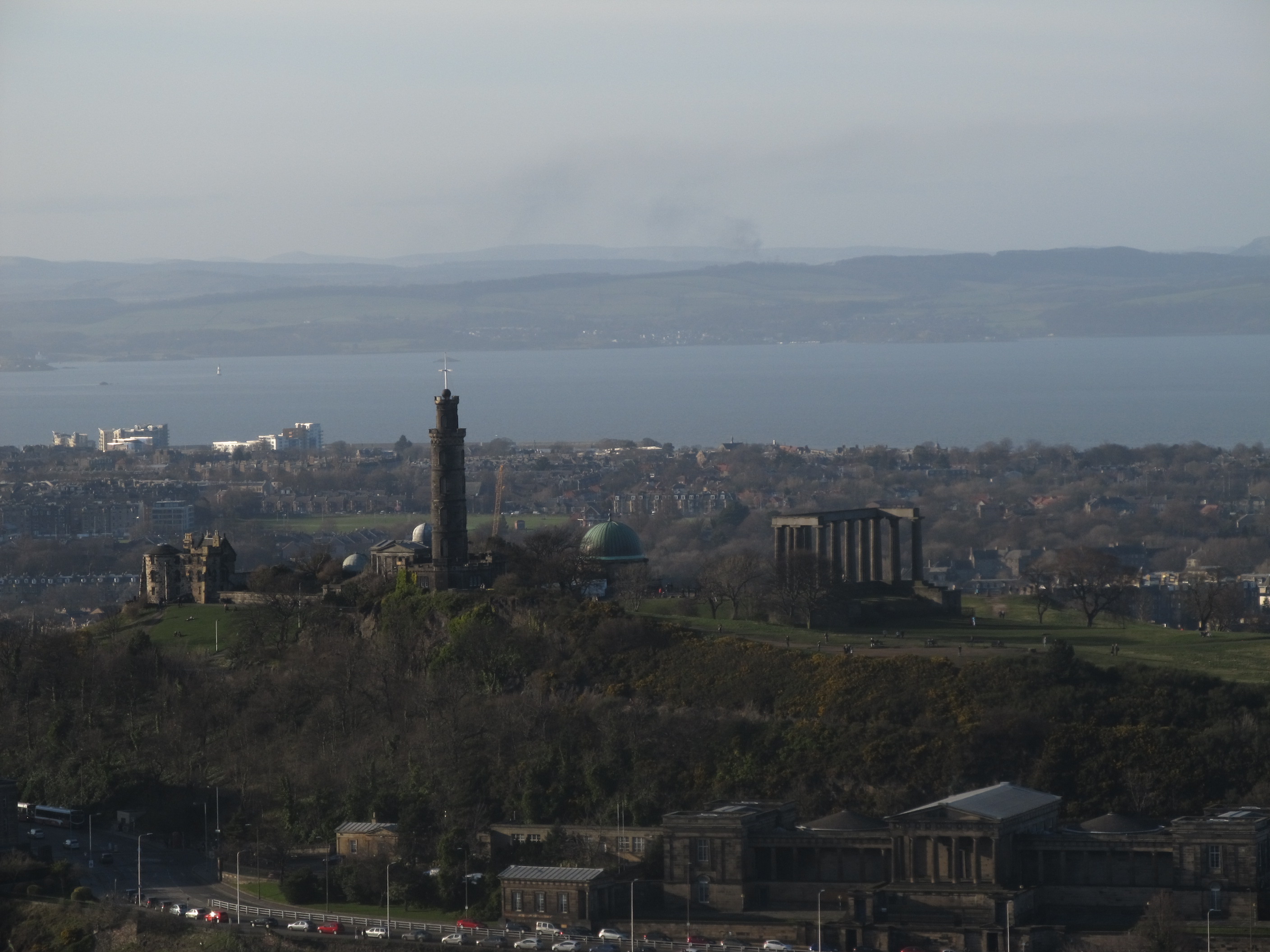
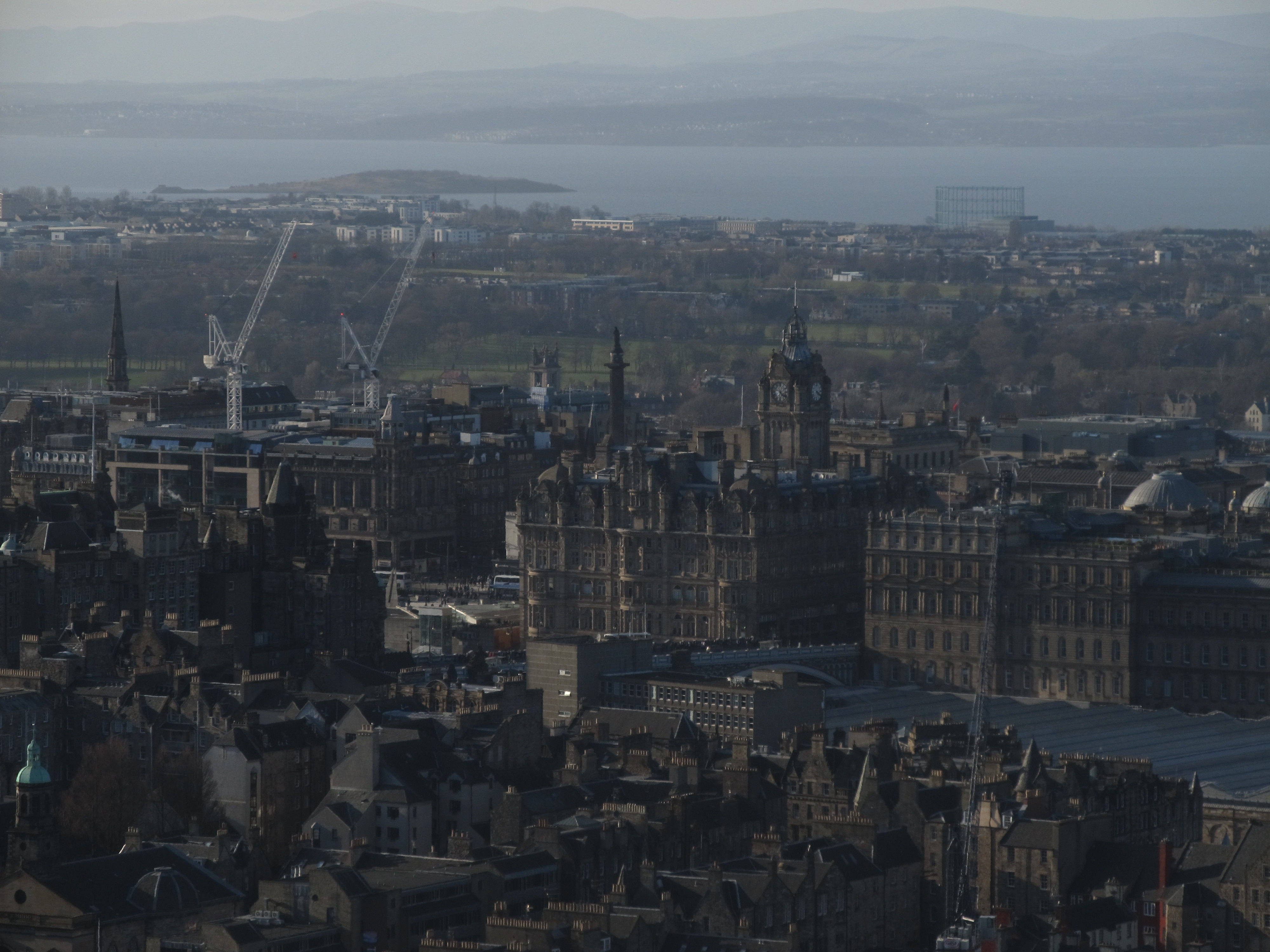
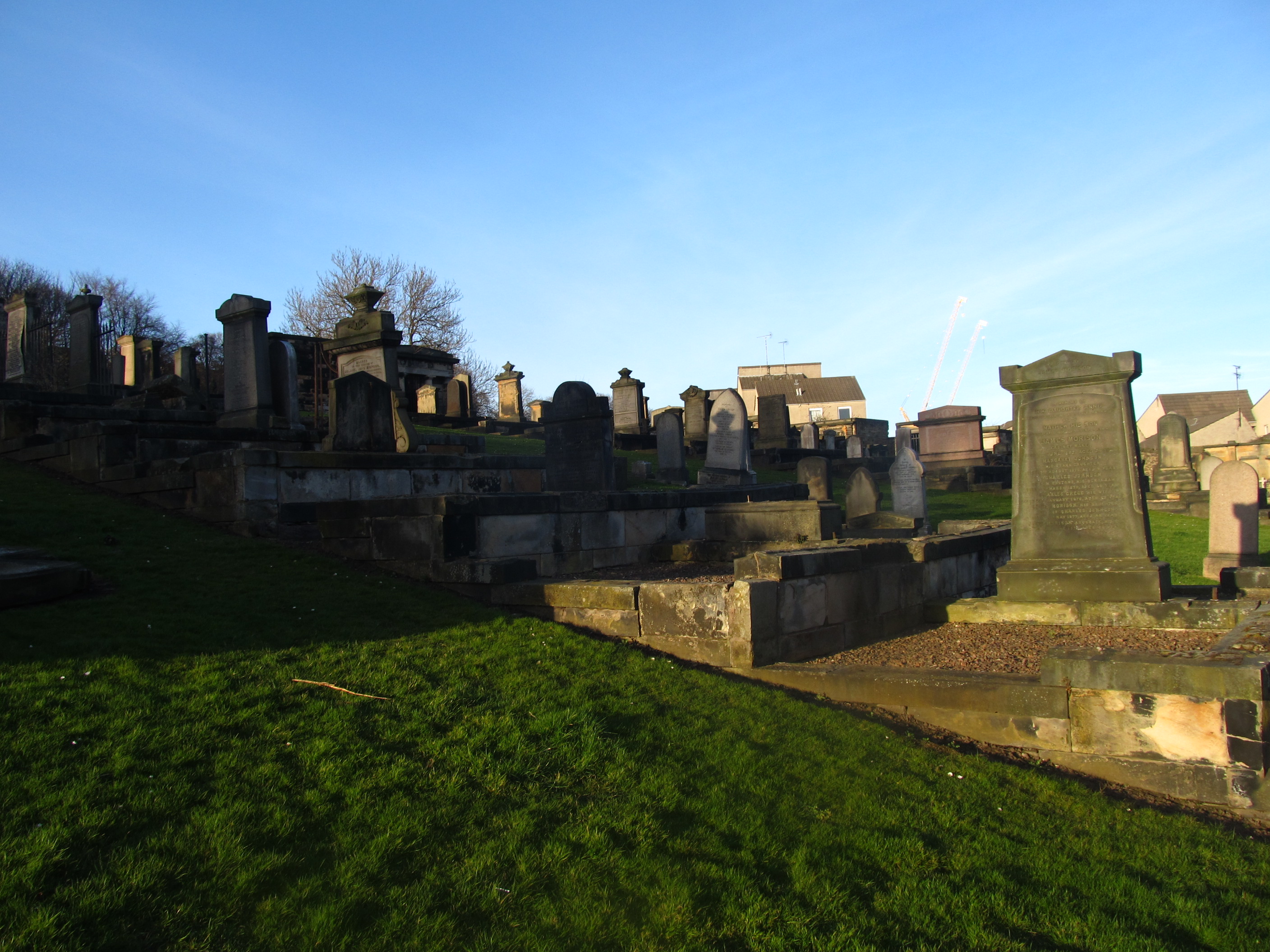


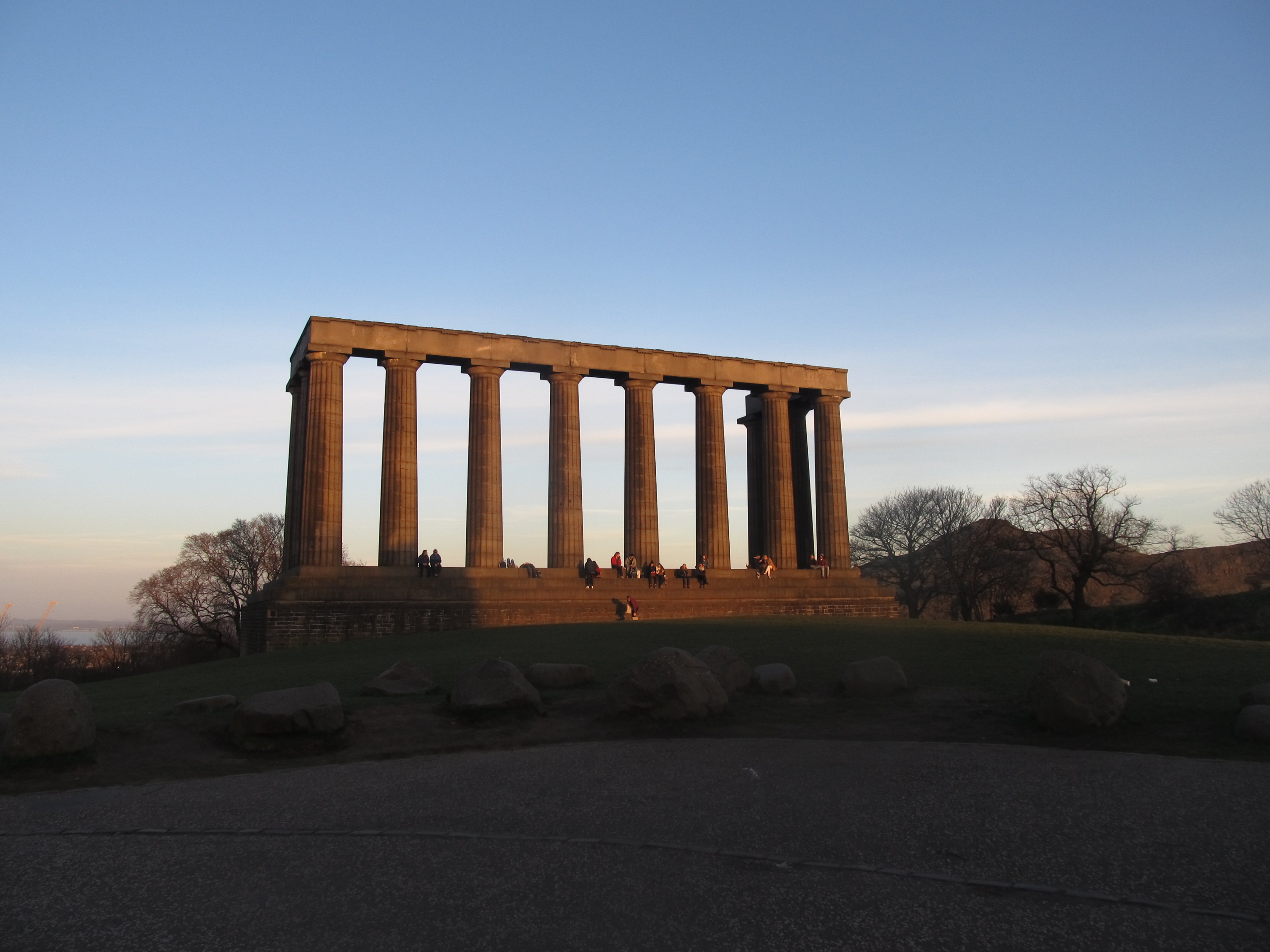


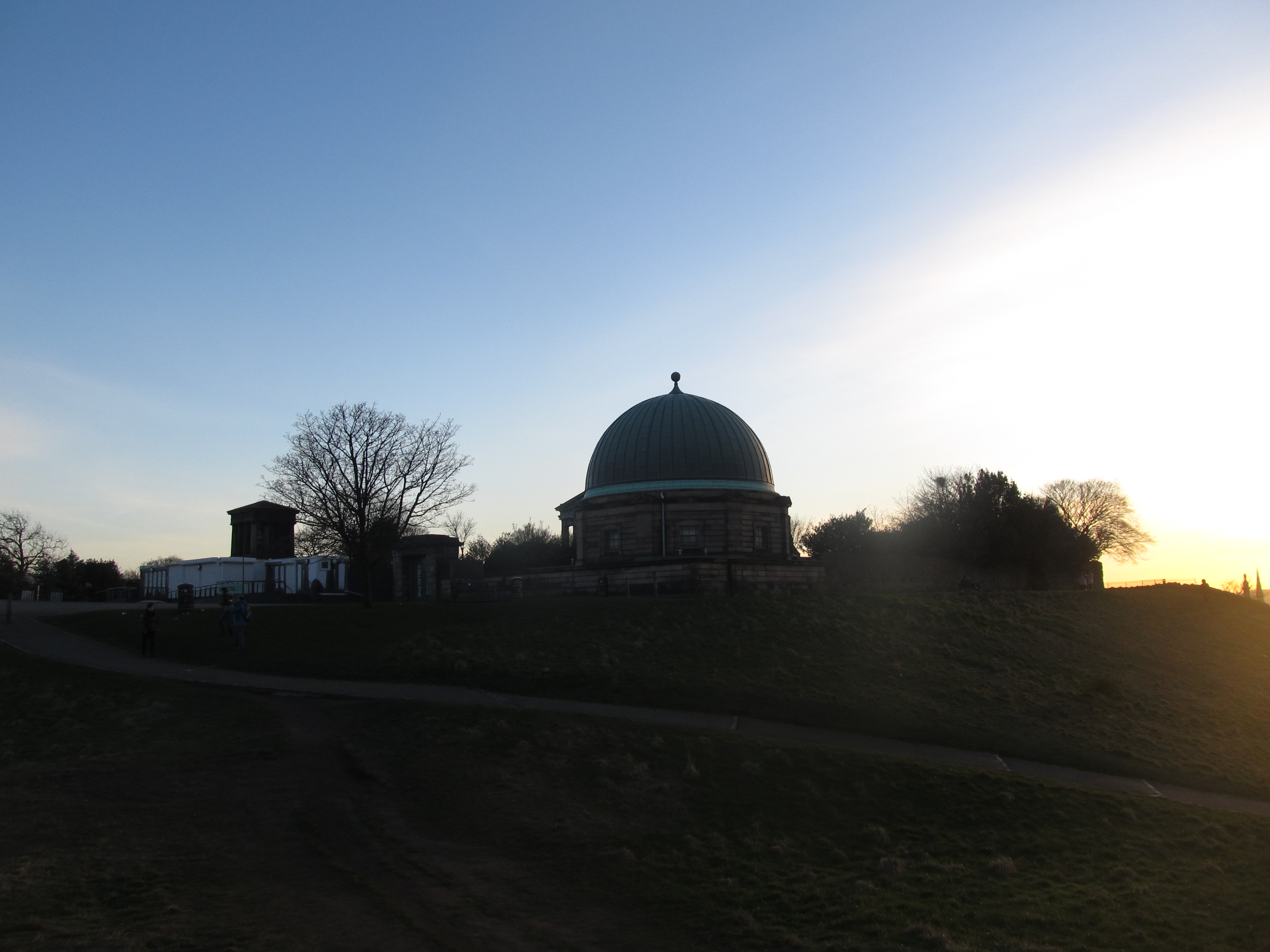
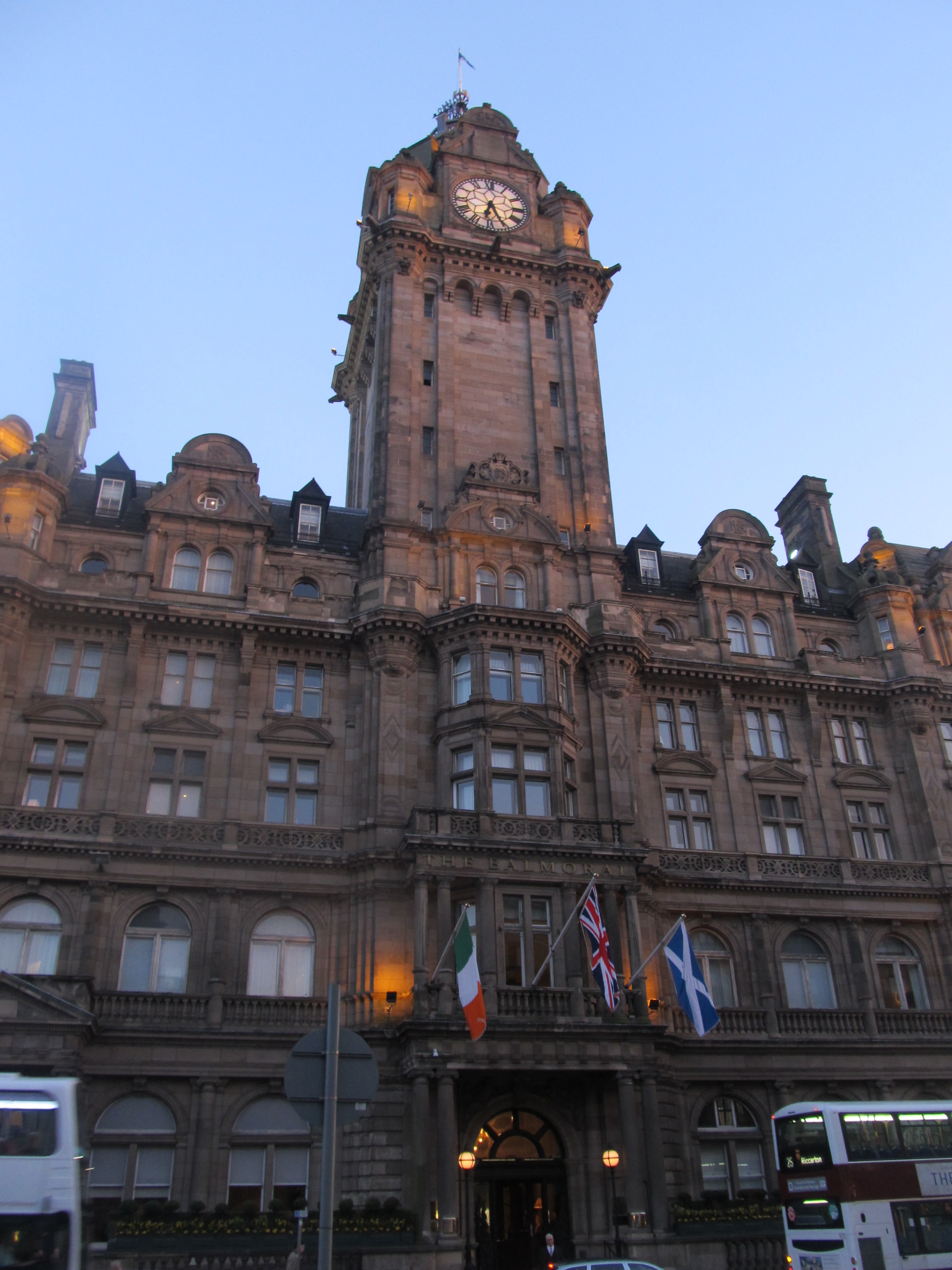
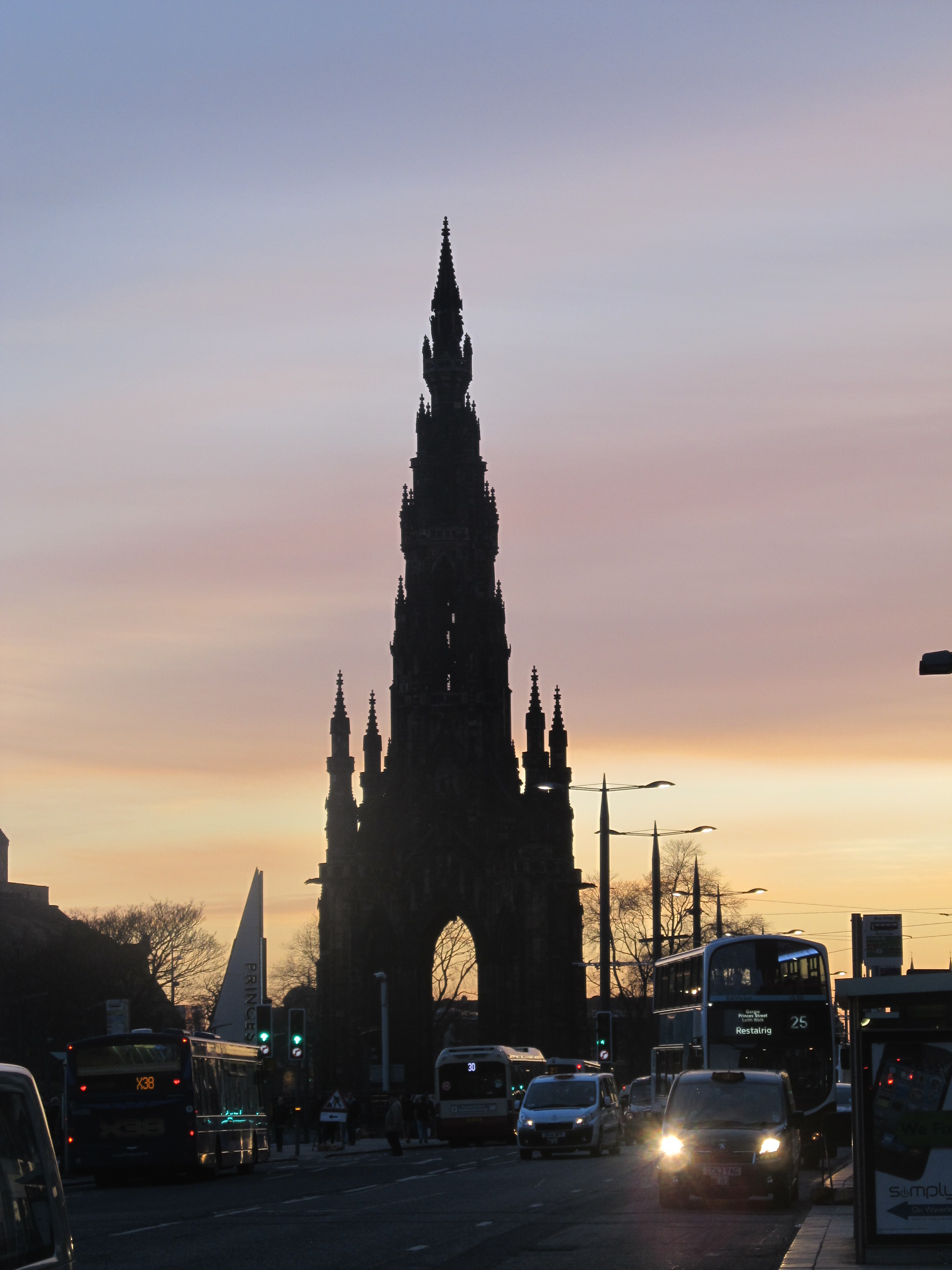

Great post! Such an amazing city
I see you don’t monetize your website, don’t waste your traffic,
you can earn extra cash every month because you’ve got high quality content.
If you want to know how to make extra bucks, search for: best adsense alternative Wrastain’s tools